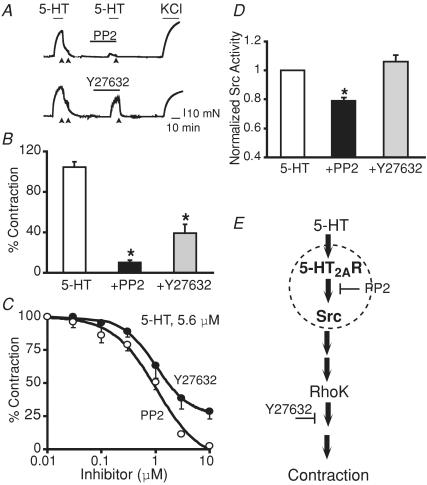Figure 7. Rho kinase inhibitor, Y27632, represses 5-HT-induced contraction but has no effect on 5-HT-induced Src kinase activity in rat aorta.
A, examples of PP2 and Y27632 effect on 5-HT-induced contraction in aortic rings without endothelium. After the first 5-HT (10 μm) challenge, rings were washed out (arrows) and incubated with either 10 μm of PP2 or Y27632 for 20 min prior to challenging again with 5-HT. Rings were then washed out (arrows) and stimulated with KCl (80 mm). B, mean values of contraction (expressed as a percentage of KCl response) elicited by 10 μm 5-HT alone or when strips were pre-incubated with 10 μm of either PP2 or Y27632. The Rhok inhibitor Y27632 can diminish 5-HT-induced contraction (∼68%) but is less potent when compared with the Src inhibitor, PP2 (∼92%); n = 3, *P < 0.05 versus 5-HT. C, percentage 5-HT (5.6 μm)-induced contraction (normalized to 80 mm KCl-induced contraction) as a function of Y27632 and PP2 concentration; n = 3–4. D, Src kinase activity measured in aortic lysates of tissues pre-incubated or not with 10 μm PP2 or 10 μm Y27632 prior to stimulation with 10 μm 5-HT. Radioactive [32P] incorporation was normalized to values obtained with 5-HT alone; n = 4 independent experiments, *P < 0.05 versus 5-HT. E, Diagram of 5-HT2AR–c-Src–RhoK contractile cascade induced by 5-HT. Since Y27632 is unable to inhibit Src activity, RhoK signalling must occur downstream of Src to regulate contraction. The dashed circle represents the 5-HT2AR and c-Src macromolecular complex. Statistical analysis was performed using ANOVA followed by the multiple comparison Newman–Keuls test.

